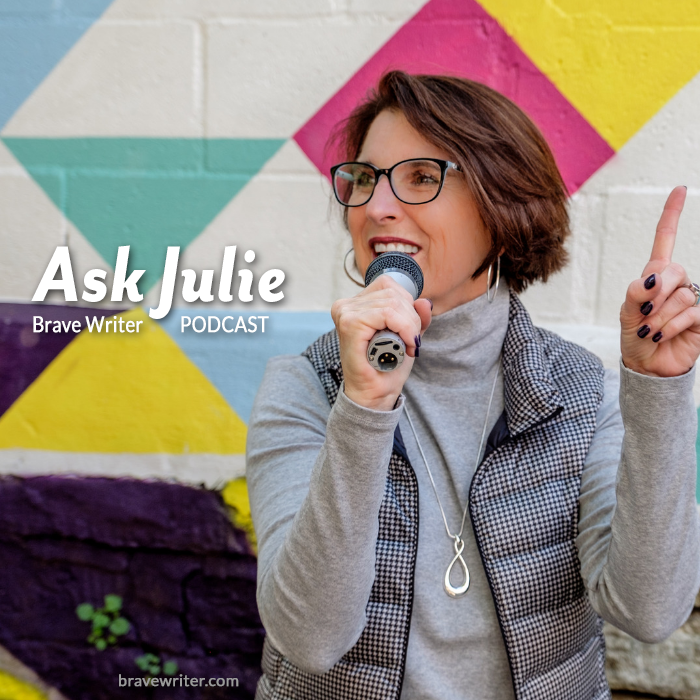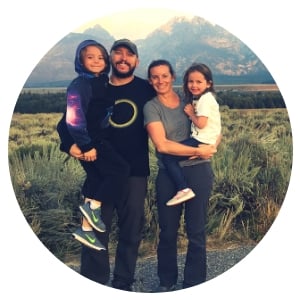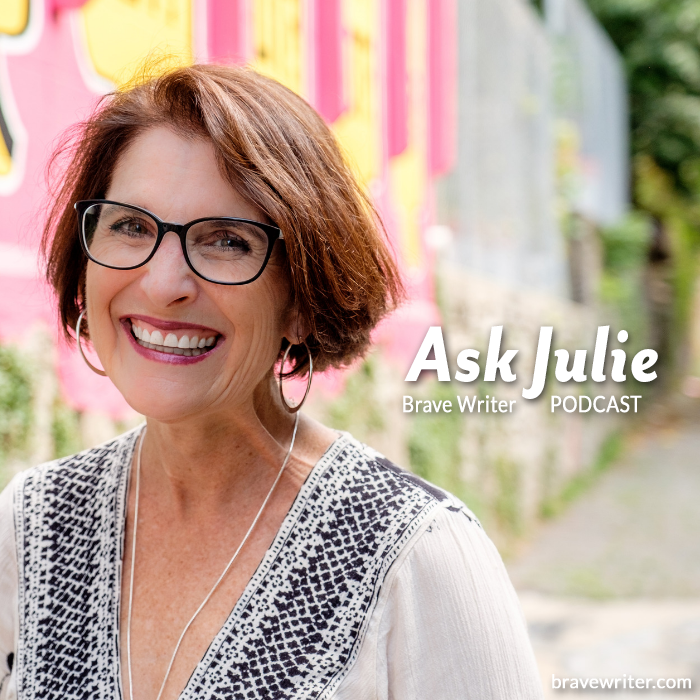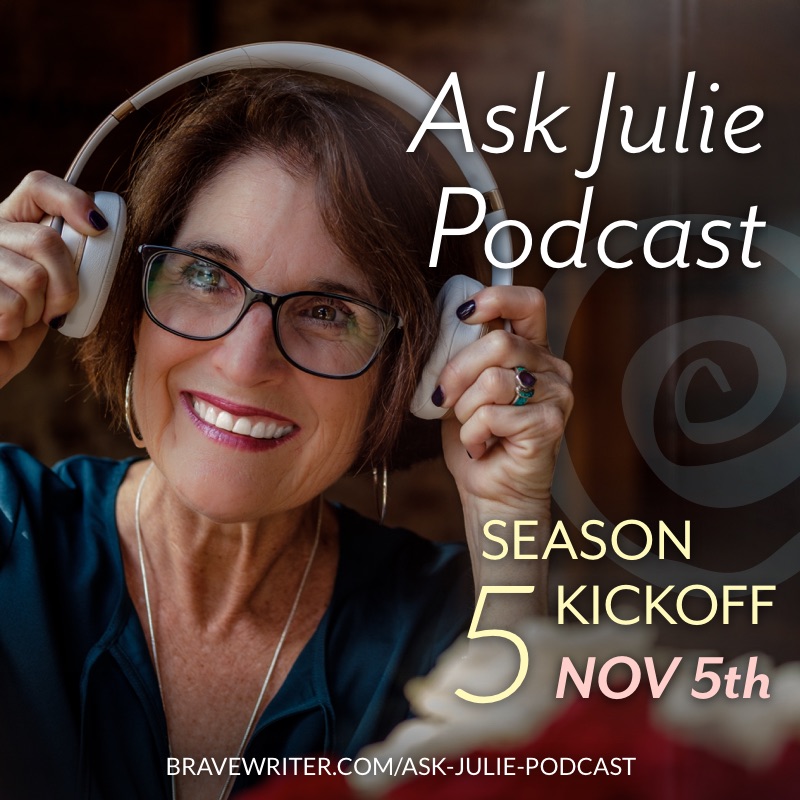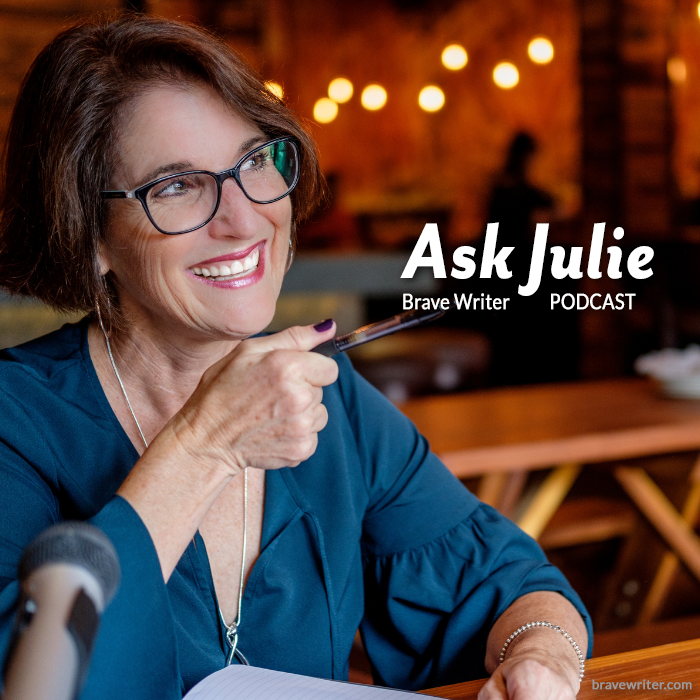
How can we balance delight-directed homeschool with the nuts + bolts rules of education?
Jennifer Vetter, our podcast guest of honor, worried about stifling her children’s creative play with dreaded phonics lessons and formal subjects like math and grammar.
Sound familiar?
I acknowledged Jennifer’s desire for a checklist—ticking off those boxes is so satisfying!—by introducing the planning from behind method. If you’ve never heard of this method of planning then you’re in for a treat.
Here’s why:
- We talk about strategies for noticing the value in work you’re currently doing and, most importantly, in what you’ve already accomplished. No more short-selling experiences!
- I explain the importance of balancing collaboration and independence.
- Jennifer shares a fun example of how she’s using technology to plan from behind.
- You’ll find out how to feel grounded by looking back and quantifying moments that tend to slip through your educational radar.

We’re striving for peace and progress in our homeschool lives. I hope this episode ushers you one step closer to that goal.
As always, I’m thrilled to bits to have you along for Season Five of the podcast!
What about balancing creativity and checklists?
Every home educator wants peace and progress. Sometimes peace looks like play, not progress; sometimes progress looks like misery, not peace. You need to recognize each individual child’s emotional need and try to reinvent the approach and reassure them. At the same time, you need reassurance, too.
So, when your children are playing, take a moment to reassure yourself. When they’re working hard on a skill, take a moment to reassure them. It’s a challenge, but try to keep both sides balanced.
When tackling these big challenges in your homeschool, there is something about a checklist that is magically appealing to a certain temperament – there is a comfort of having covered everything.
However, when we focus on checking off a list, we sometimes don’t see the progress in action. We might not see the assimilation and implementation of what our children are already using in the way they play.
Having said that, there is value in having a list! So, don’t throw out your list the first time you feel you’re behind; reorient how you look at your list. Remember you can “plan from behind.”
And a friendly reminder that you have plenty of time. Maturity helps learning – it’s not just the system or the method; the brain has an almost magical capability for making amazing leaps as children mature.
We sometimes short-sell our young childrens’ experiences because they didn’t come from a lesson plan or a book, but they have a lot of developmental and educational value. So, value the skills that show up naturally.
You can also borrow elements of play and inject them into skill building, and inversely, inject elements of skill building into play – that’s where the delight-directed method of learning takes off!
Julie’s Advice:
- Make a chart with two columns: Collaboration and Independence. Reimagine play as independence and skill building as collaboration, and understand that a lot of independent learning is delight-directed, while hard skills benefit from collaboration. Play looks like fun, but it feels vague and the true value (education-wise) can seem invisible. But play really is a consolidation of skills – children take what they’ve learned and apply it to their imaginative play. So, make an active effort to toggle between independence and collaboration.
- Imagine that the skills you want your children to learn can go through a baptism of enchantment or “pixie dust!” How can you add elements of play to difficult skills?
- Sweeten the deal with a special treat, switch up the location, use different tools (pens, colors, writing surfaces, etc.), and keep sessions short. Say, “We’re going to take 15 minutes for just you and I to focus on tackling this skill together, then you can go back to ______.” Rotate these dedicated focus times through your different children and throughout the week.
- Write down the skills you want to address with each child over X amount of time, and stay vigilant for evidence of those skills. Then make a special note of it when you see it happen so you can have tangible evidence of their learning, for your own reassurance.
- Consider going over previous items you’ve stored in each child’s portfolio with that child individually to show them how much you value their growth!
Download the FREE Podcast Transcript
Please post a review on Apple Podcasts for us (here’s a handy guide)?
Help a homeschooler like you find more joy in the journey. Thanks!


